You might have noticed that some of your desktop icons sport a green checkmark, while others don't. The green checkmarks are simply a way for OneDrive to let you know that the files are successfully backed up your file to the cloud and are readily available for you to access.
Those checkmarks don't mean there are errors or issues with the file. But if you find them distracting or want to get rid of them for any reason, it's an easy thing to do.
Why do Desktop Icons Have Green Check Marks in Windows 11?
The green checkmarks on your desktop icons are like status symbols from OneDrive, indicating that your files have been safely backed up to the cloud. This means you'll have access to your data from any device, anywhere, anytime.
Those green checkmarks can also mean that the file or folder is being shared with other users on the same network. Moreover, it might also indicate that the file or folder has been marked as a favorite, making it easier for you to quickly access the files and folders you use most frequently.
Types of OneDrive Sync Symbols
OneDrive uses four different checkmarks to indicate the various backup statuses of your files. Here's a quick breakdown of what each checkmark means:
- Green check mark or green tick. It indicates the desktop icon or file is an online file. After you open an online-only file, it is downloaded to your device and, is now locally available. With Storage Sense running, files with this symbol will remain on your computer unless they meet the Storage Sense criteria, in which case they will be moved to the cloud only.
- Solid green circle with the white check mark. This checkmark means files that are always synced to the cloud and are accessible even when you're offline. These files are known as 'Always available' files and are stored locally on your device and in the cloud for seamless access. Any changes you make to these files will be automatically synced to the cloud whenever you are online.
- Blue cloud symbol. The files with the blue cloud icon (Online-only files) are stored in the cloud and not on your device. It is only available if you are connected to the internet. To view or edit these files, you must download them first by opening them. Once downloaded, the blue cloud icon will change to a green checkmark icon, indicating that the file is locally available.
- Red cross symbol. The files with red cross means they are not able to sync and are experiencing syncing errors. This could be due to file corruption, an unsupported format, or other technical reasons. These items will be available locally on your Windows PC but may not be accessible online.
1. Remove Green Check Marks on Desktop Icons
If you're tired of seeing green checkmarks on your desktop icons in Windows 11, there are several methods to get rid of them. Before diving into more complex solutions, try these simple steps:
- Check the Icon Properties: Right-click on the icon with the green checkmark and select 'Properties'. Under the 'Shortcut' tab, look for any options related to the green checkmark. If you find any, uncheck them.
- Switch Icon Themes: Sometimes, the green checkmark is part of the icon theme you're using. To change this, right-click on the desktop and select 'Personalize'. Then, click on the 'Themes' option on the left side of the window. There, you can select a different theme and see if the green checkmark disappears.
2. Pause Sync on OneDrive to Remove Check Marks
OneDrive regularly syncs with your computer to keep your files backed up on its cloud storage. If you don't want to completely shut down OneDrive but want to temporarily pause it from syncing, you can pause the syncing process. This will prevent OneDrive from backing up your data and will remove the checkmarks that indicate syncing status.
You can pause syncing for a limited period of 2, 8, or 24 hours. If you need to stop syncing permanently, you'll need to either follow the above method or refer to the next method that we will cover later.
- Click the up arrow in the taskbar corner to expand the system tray and click the 'OneDrive' icon present here.
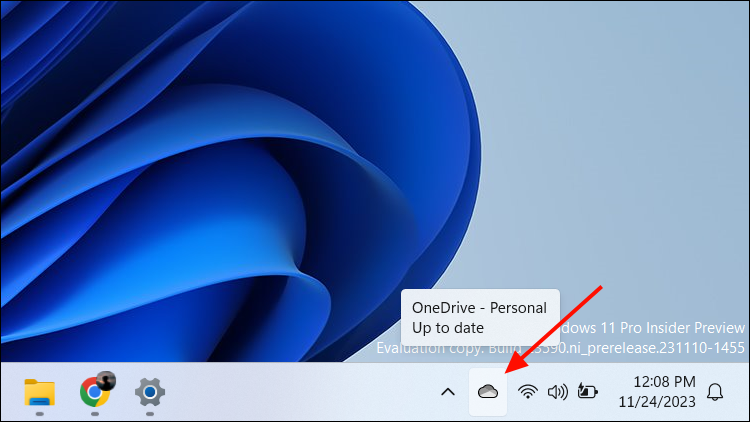
2. Then, click the 'Gear' icon on the top right and click the 'Pause Syncing' option from the drop-down menu.
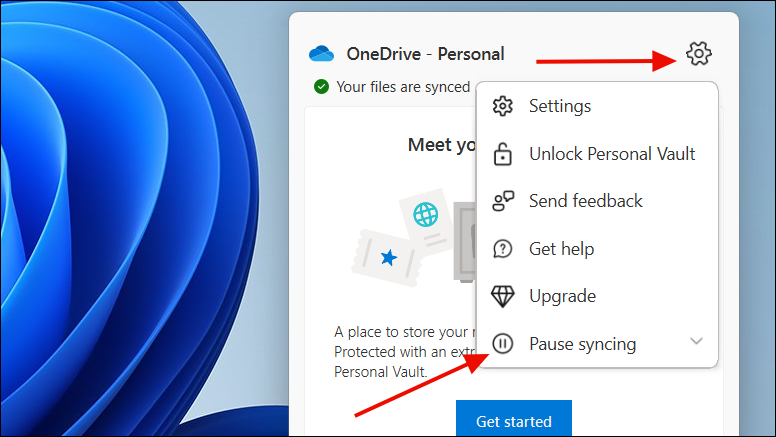
- From the list of timeframes, choose the one that you prefer.
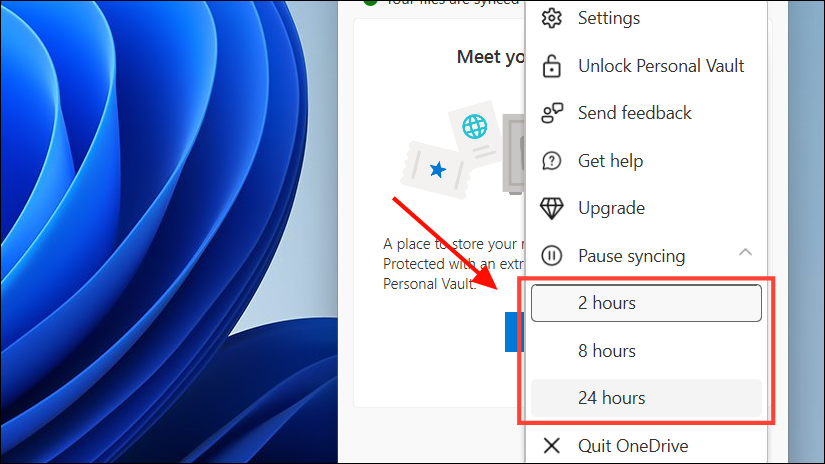
Pausing OneDrive syncing will only remove the green checkmarks temporarily. Once syncing resumes, the green checkmarks will reappear. This is because pausing syncing does not stop OneDrive from backing up your files; it only stops OneDrive from updating the status icons on your desktop.
3. Stop the Desktop Backup on OneDrive
The desktop is one of the many locations on your PC that is being backed up to OneDrive by default. If you'd prefer to keep OneDrive syncing your other files but don't want it to back up your desktop files, you can disable syncing specifically for your desktop location.
This will remove the green checkmarks from your desktop icons, but your other documents, pictures, and videos will continue to sync seamlessly.
- Open OneDrive, click on the settings gear icon in the top right corner, and select 'Settings'.

- In the OneDrive Settings window, go to the 'Sync and backup' tab and click on 'Manage backup'.
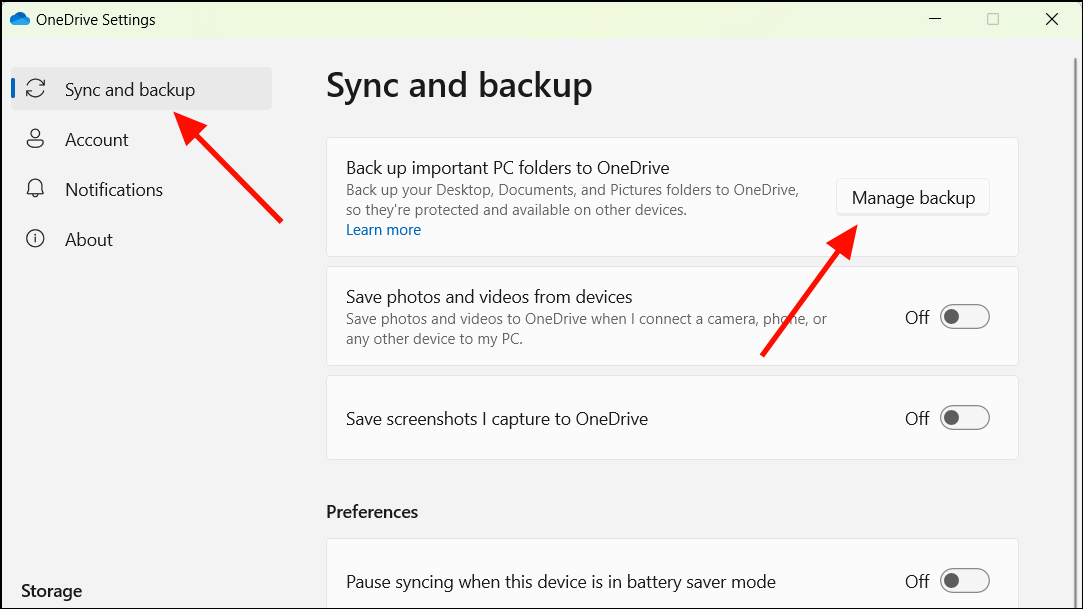
- Another OneDrive window will pop up. Here, turn off the toggle next to the 'Desktop' option.
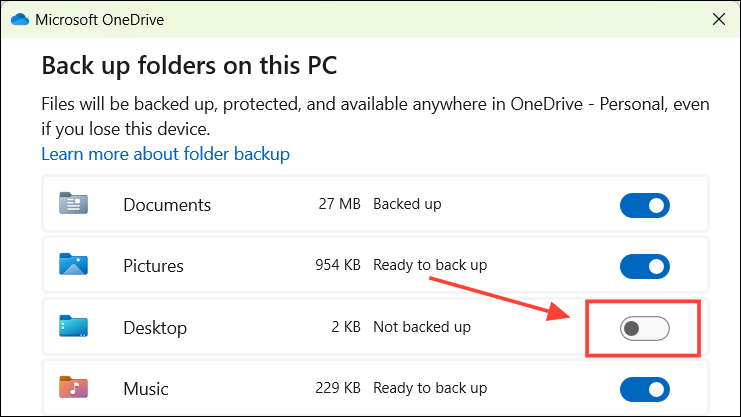
- When prompted, click on 'Stop backup'.
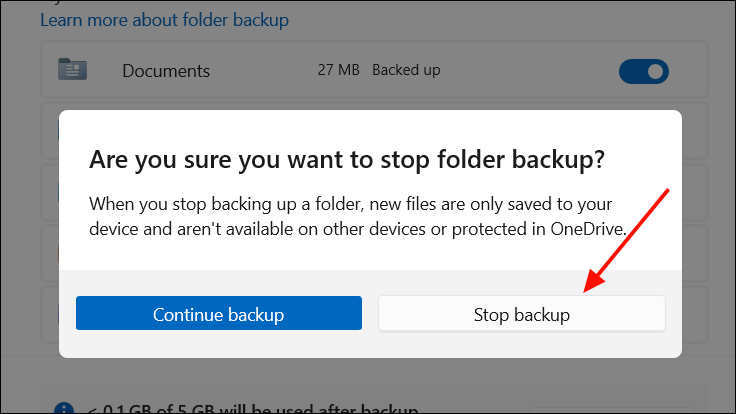
- It will take a few moments to get things ready. Then, click 'Save changes'.

- Wait for the process to complete, then refresh your desktop.
Once it's done, OneDrive will no longer back up your desktop items, and the green checkmarks will disappear from your desktop icons.
However, your current desktop files and files stored in the OneDrive cloud will not be affected by this change. If you want to delete any files from the OneDrive cloud, you'll need to sign in and delete them manually.
4. Turn On Always Keep on This Device
As mentioned earlier, the green check mark indicates that the file or icon is only available on your desktop when you have internet access and OneDrive running. To access the file even without an internet connection, you need to enable the 'Always keep on this device' option, which will keep the file permanently on your computer and synced to the cloud.
All you have to do is simply right-click the icon with the green check mark and select 'Always keep on this device'. Once enabled, you'll see a checkmark next to the option. Repeat these steps for any other icons you want to make available offline.

Once turned on, you will see a tick mark next to the option. Repeat the steps for other icons. Enabling the 'Always keep on this device' option will change the green check mark to a green circle with a white check mark symbol.
Enabling the 'Always keep on this device' option will change the green check mark to a green circle with a white check mark symbol.
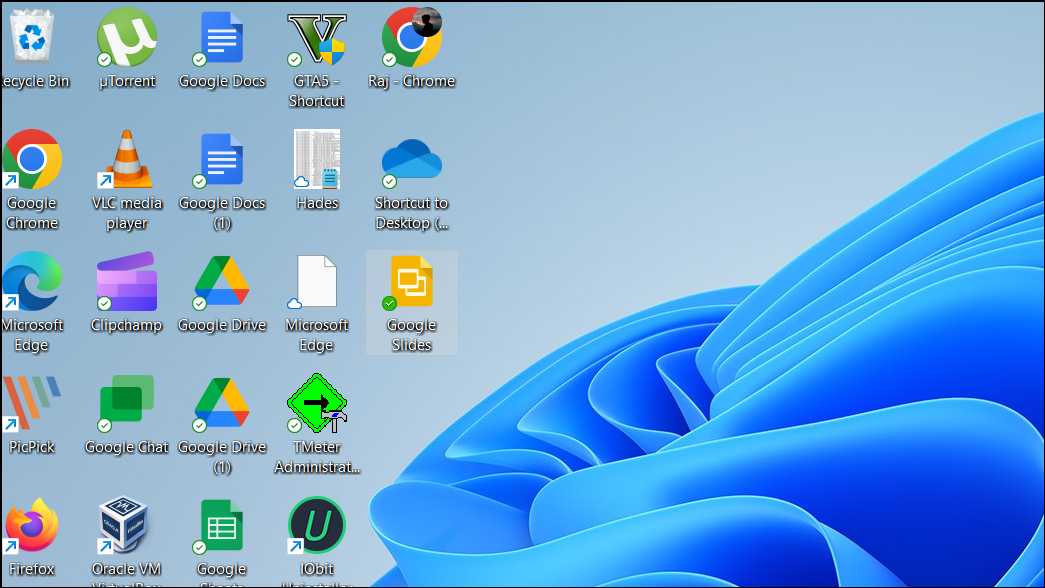
5. Free Up Space on OneDrive
OneDrive offers a handy feature called 'Free Up Space' that allows you to manage local copies of synced files. Once a file has been synced to the cloud, you can use this feature to clean up the local copy, saving space on your device. When you free up space for a file, the green checkmark on the icon should disappear, indicating that the local copy has been removed.
Just, right-click on the icon with the checkmark and select 'Free up space'.
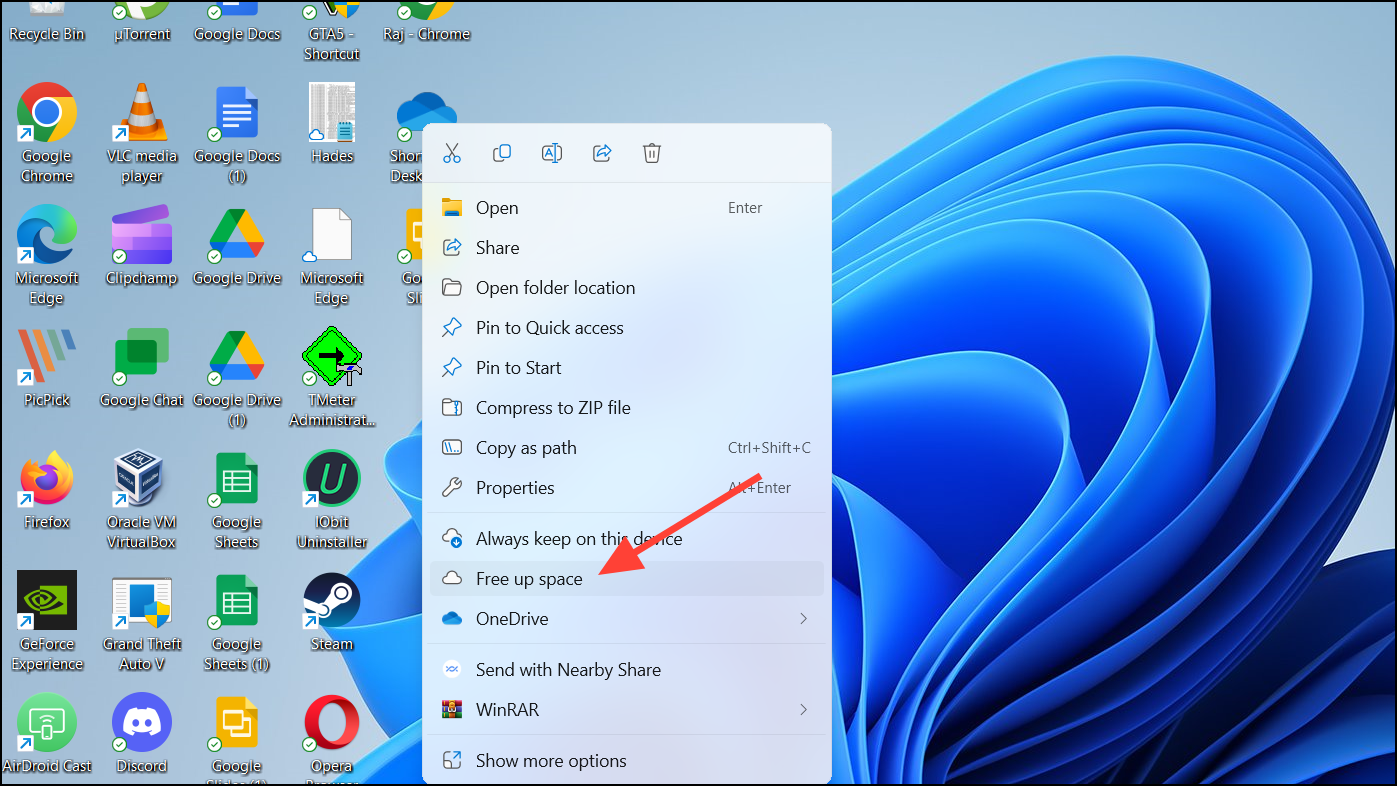
6. Disable OneDrive from the Startup
By default, OneDrive automatically starts up whenever you turn on your PC, syncing and backing up your files. If you want to prevent OneDrive from launching automatically, you can disable it from the Startup tab in Task Manager. This will stop OneDrive from running in the background and will also remove the green checkmarks from your files and folders.
To disable OneDrive from startup, follow these steps:
- Open Task Manager by pressing either
Ctrl+Alt+DelorCtrl+Shift+Esc. - Select the 'Startup' tab and find the 'OneDrive' entry in the list of startup items.
- Right-click on the 'OneDrive' app and select 'Disable' from the context menu.
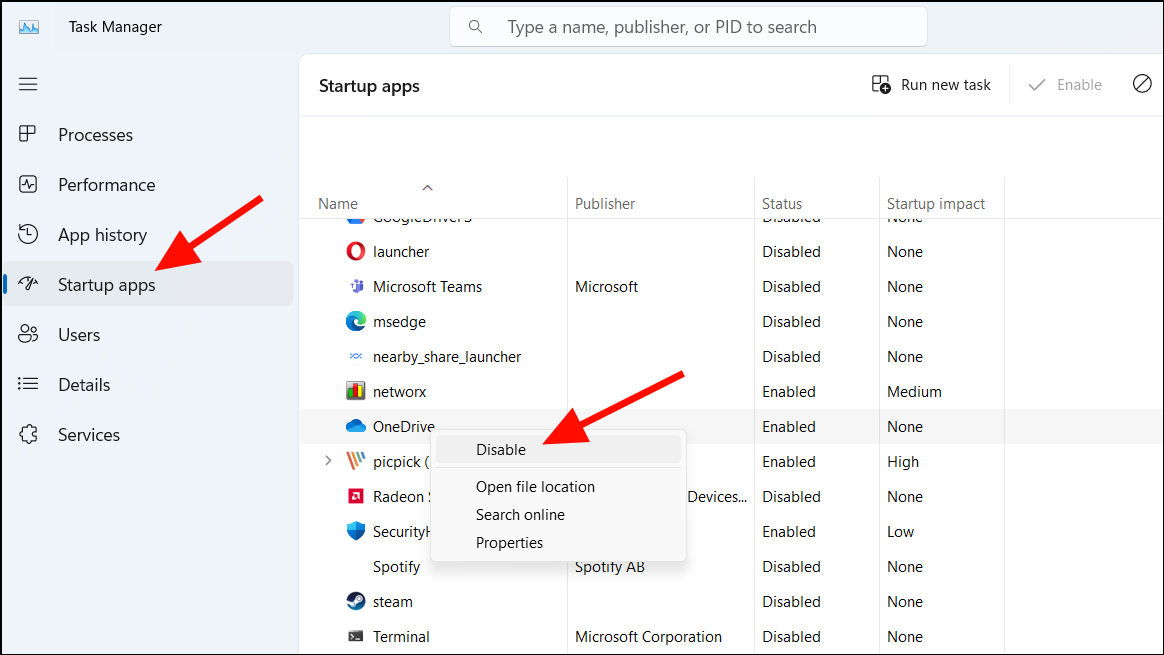
- Then, close Task Manager and reboot your PC.
Once you have disabled OneDrive from startup, the green checkmarks will disappear from your files and folders. OneDrive will also no longer run in the background, preventing it from consuming resources and syncing files automatically.
7. Re-build the Icon Cache
If the green check mark cannot be removed by stopping the syncing and disabling OneDrive, rebuilding the icon cache might help.
Windows keeps copies of all your desktop icons in a storage area called the icon cache. Deleting this icon cache on your Windows 11 PC will automatically remove the green marks and restore your desktop icons to their normal appearance. Here's how to do it:
- Open Command Prompt as an administrator.
- When the Command Prompt window opens, type or paste each line of commands one by one and press Enter after each command to run it.
exe-showtaskkill /IM explorer.exe /FDEL /A /Q "%localappdata%\IconCache.db"DEL /A /F /Q "%localappdata%\Microsoft\Windows\Explorer\iconcache*."Shutdown /p
Once you've finished entering the commands, your computer will automatically shut down. After a short while, turn it back on and the icon cache will be rebuilt and the green check mark will probably disappear.
8. Unlink The PC from Your Account
The green checkmarks keep showing up because OneDrive keeps working in the background, syncing your files to the cloud. OneDrive does let you pause syncing, but only for up to 24 hours. So, if you choose 24 hours, you'll have to pause syncing again after a day.
Instead of messing with the Pause syncing feature, you can just unlink OneDrive from your computer. This will stop syncing your files to the cloud and remove all the Online Only files, but it won't touch your locally available files.
- Find the OneDrive icon in the taskbar, and right-click on it.
- From the OneDrive menu that pops up, select the 'Settings' option in the OneDrive interface.
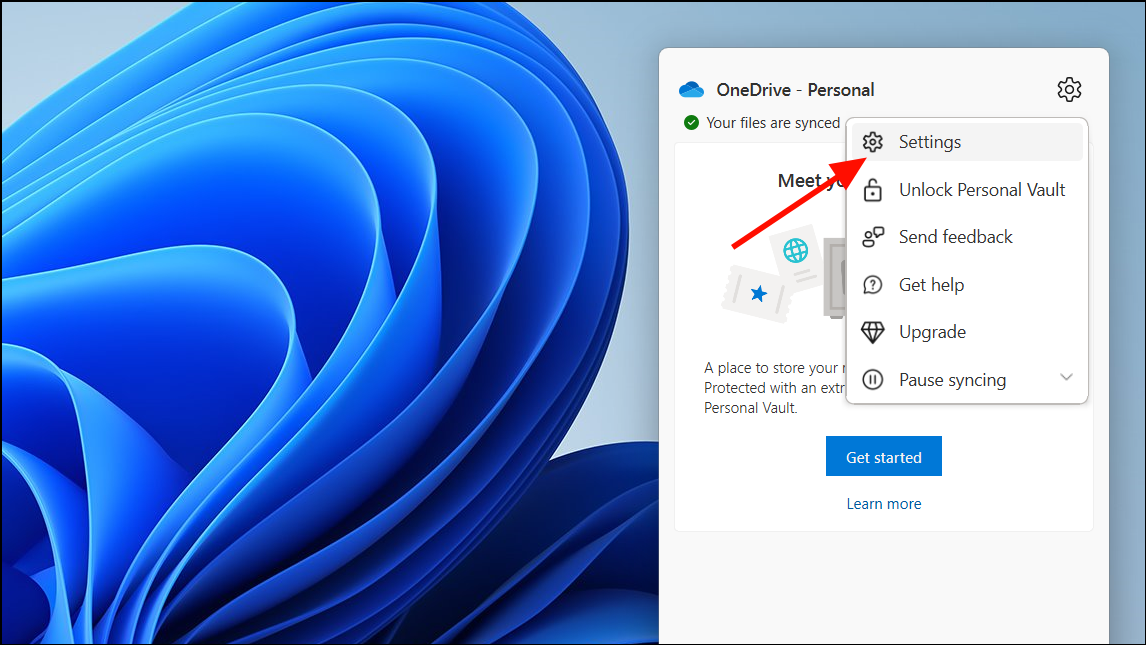
- In the OneDrive Settings window, head over to the 'Account' tab and select 'Unlink this PC'.
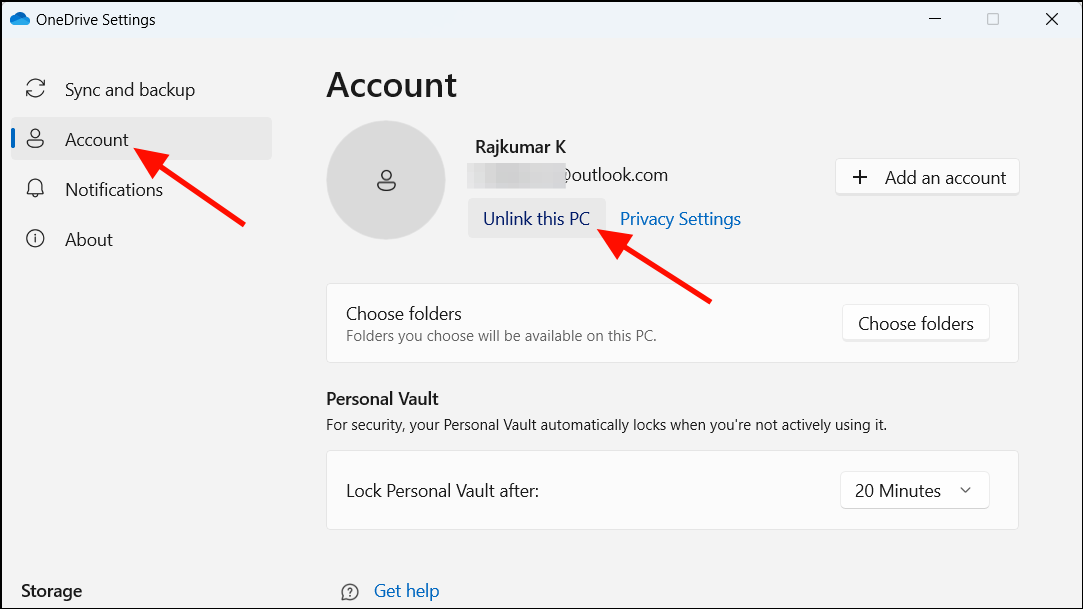
- When prompted, click the 'Unlick account' button.
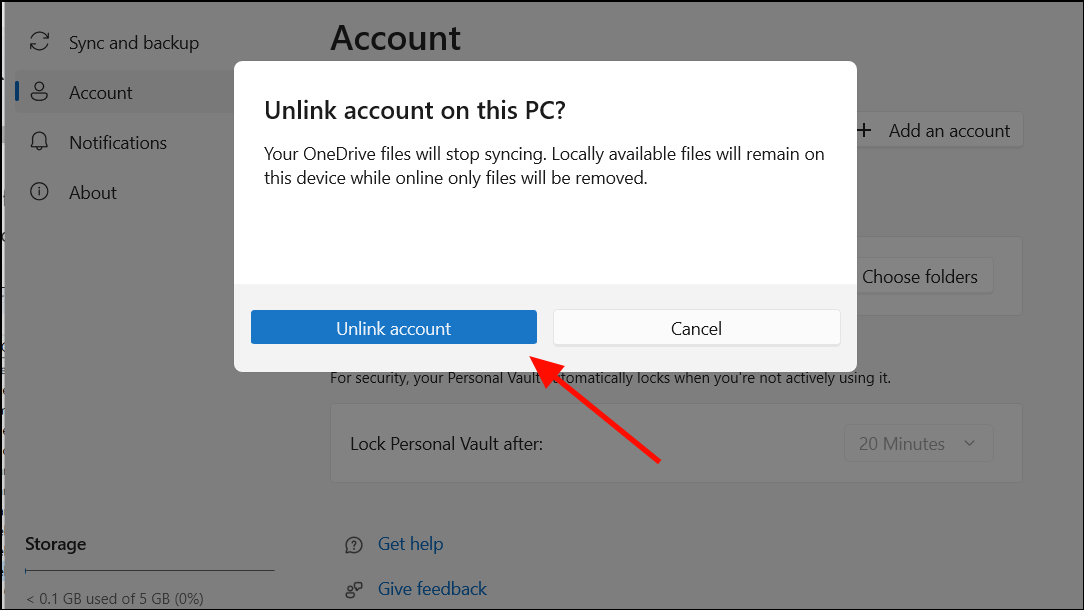
- After that, refresh your computer.
9. Modify the Registry Editor
If none of the above methods were able to the green check marks on desktop icons, files, and folders, you can try deleting OneDrive registry entries. This will prevent OneDrive from adding overlays to your desktop icons and files. Here's how to do it:
- Press
Windows+Rto open the Run dialog, typeregeditin the search box, and hit Enter. - Navigate to the following folder path in the Registry Editor:
Computer\HKEY_LOCAL_MACHINE\SOFTWARE\Microsoft\Windows\CurrentVersion\Explorer\ShellIconOverlayIdentifiers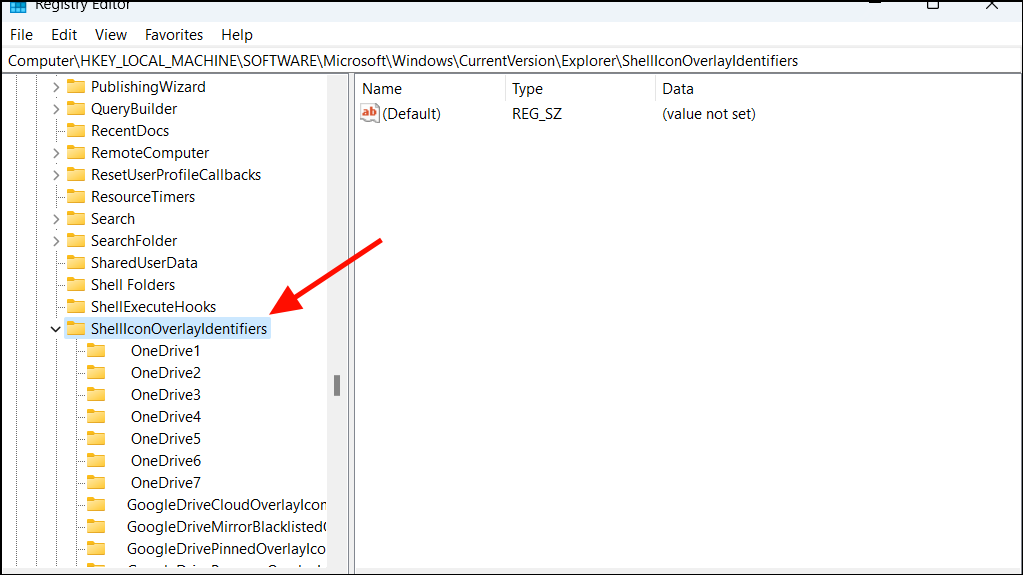
- Before removing any keys, right-click on the 'ShellIconOverlayIdentifiers' folder and select 'Export'. Then, save the file in your preferred location. This will create a backup file in case you need to restore any keys later.
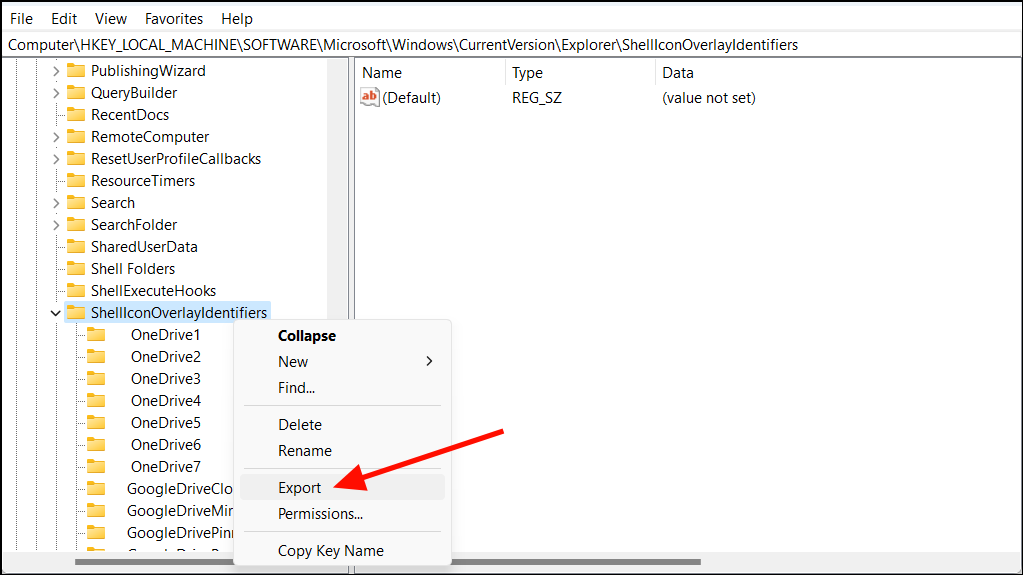
- Under the 'ShellIconOverlay' folder, you will see several OneDrive keys like 'OneDrive1', 'OneDrive2', and so on.
- Now, select and delete all the OneDrive keys one at a time.
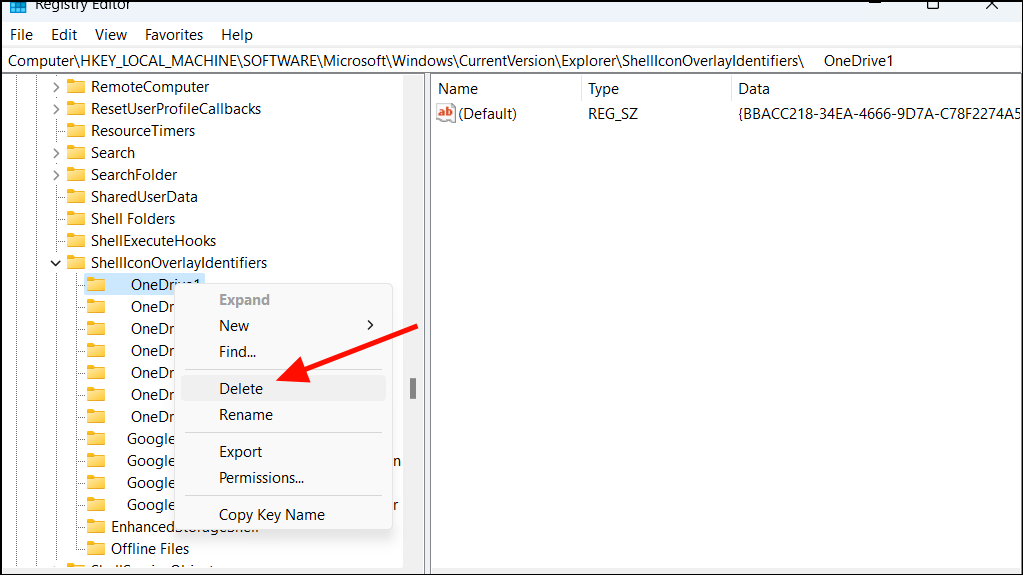
- Once it's done, close the Registry Editor and restart your PC.
If wish to restore green check marks in the future, restore the backup file you created in step 4. This will restore any keys that you may have deleted unnecessarily.
10. Delete the Files
Those annoying green checkmarks will disappear if you remove the corresponding parent icons from your desktop. So, if you're still seeing those green checkmarks, you can simply delete the icons from your desktop if you don't need them. Don't worry, this won't affect the parent files in OneDrive. They'll still be safely stored in the cloud.


